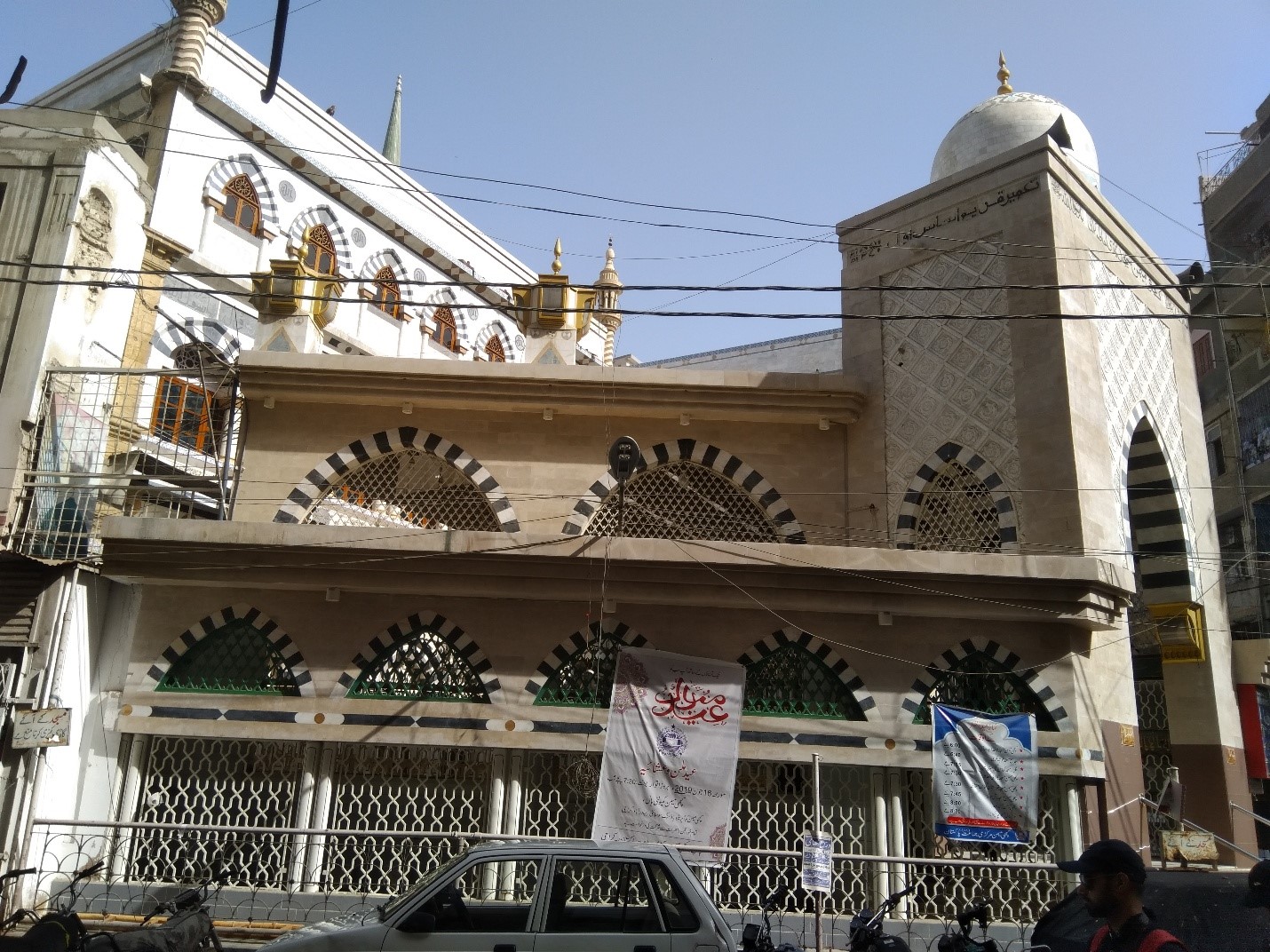Written by Ali Safdar
Lahore University of Management Sciences, Lahore
The Heritage Walk conducted by Pakistan Chowk Community provides an opportunity to study heritage sites in Old Town Karachi. These sites stand out, from the cement rectangular buildings surrounding them, because of their dilapidated condition due to negligence. Beautiful tinted glasses adorn rotten wooded window frames, and their jagged edges reveal dusty rooms. Dust and commercial boards mask the intricate design and aesthetic beauty of these Heritage sites. Their rooms are now used by shopkeepers to store goods. Some of them are occupied by citizens that barely earn enough to survive and support their families, let alone spend money on any renovations.
The Governmental departments concerned with preserving heritage sites bemoan a lack of funds to promote and preserve such sites. Such projects are simply not a priority of the Government. This is concerning because protecting Heritage sites is not only to beautify the landscape of Karachi. These buildings are different from the uniform. 'efficient' structures constructed nowadays tha itt have 'productive' purposes. These Heritage sites are important characters in the story of Karachi. They are reminders of a time when Hindu, Sikh, Parsi people played a prominent role in the prosperity of the city. During the Heritage Walk, participants walk through the famous, fragrant 'Parsi Gali'. They visit the Menghraj Dwarkadas Nagpal Building, a Hindu hostel built in 1918 that still has broken remnants of a Hindu Temple. If these buildings are neglected and erased, the stories and contributions of these communities in weaving Karachi's story will also be erased.
However, walking through the Gaari Khata street one cannot help but notice Kutchi Memon Mosque. Its green minaret, green and white striped archways resemble Al-Masjid an-Nabawi, the second holiest site in Islam. Kutchi Memon Masjid entrance gate is a copy of the King Fahad Gate present in Al-Masjid an-Nabawi. This resemblance was achieved after the Mosque was renovated in 2000.
This renovation shows the priorities of the people regarding preservation and association with the past. First of all this shows that people would rather pay attention to places that have religious importance or show the Islamic aspect of Karachi's past. This tells us the extent the past has been reconstructed and packaged to the present citizens of Karachi, who are not aware of the historical sites around them and their significance. The idea that Pakistan is an Islamic country left no place for other identities to exist more than a 'minority'. The major role that they played in these cities is erased completely. Secondly the resemblance to Al-Masjid an-Nabawi reveals that the citizens of Karachi value ideas and history that played out thousands of miles away from them. They prioritize their Muslim identity over their Pakistani identity. This tells us the success of the governments project to islamize the story of Pakistan. This distortion left a confused story of Karachi. A story where major characters such as the Hindus and Parsis were removed. So people did not wish to associate, understand this convoluted narrative and clung to their religious past and identity. The proof of this claim lies in the condition of Heritage sites around the city. Their decaying edifice is proof of the priorities of the citizens of Karachi.



